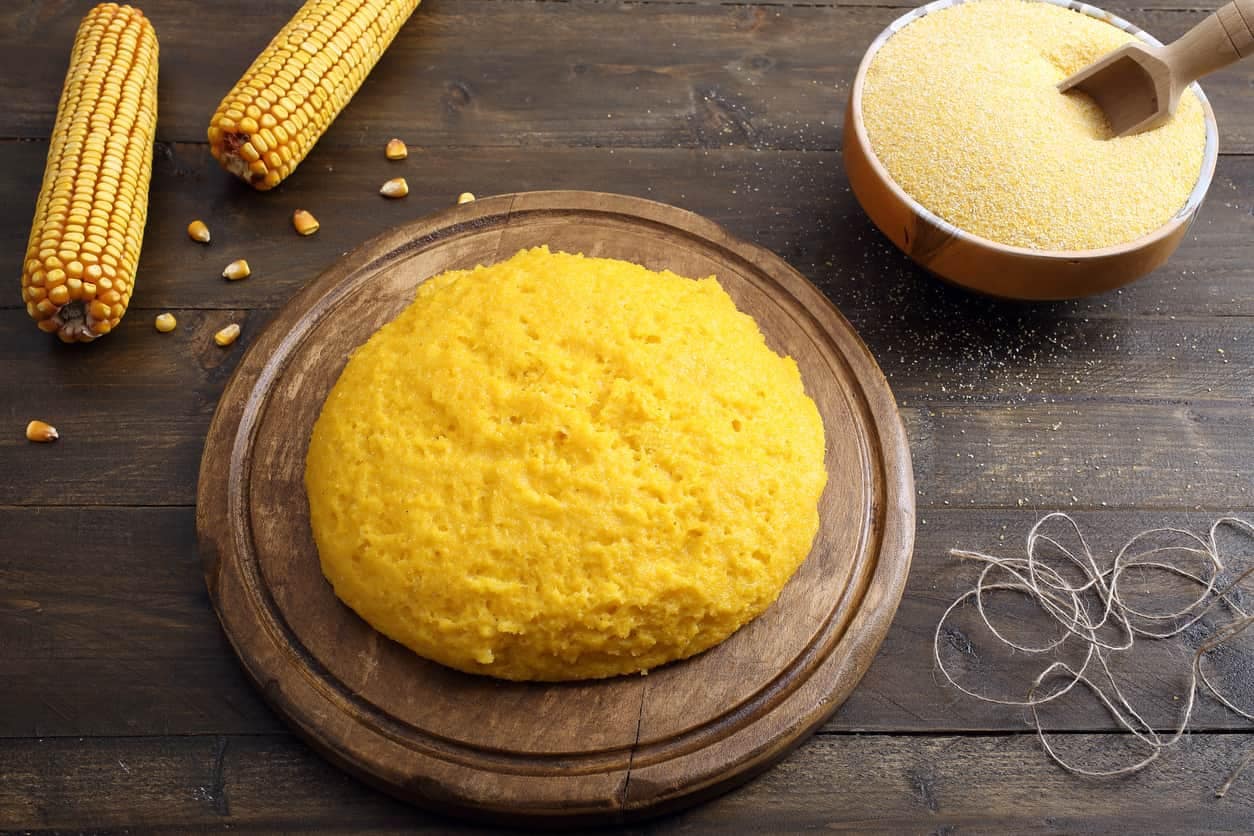Description du conseil
We know it by name, more rarely by taste, and yet… So organic, so good, polenta makes it possible to vary cereals and recipes simply and easily. Sweet or savoury, crunchy or soft, Priméal reveals the secrets of cornmeal, a vegetable wonder just waiting to be (re)discovered.
What is polenta?
The term polenta is a contentious one, as its origins go back so far, and its interpretations vary from region to region. For the vast majority of cooks, it refers to a pre-cooked cornmeal that is more yellow and granular than its cornflour cousin.
The same term is used for the dish made from raw wholemeal cornmeal, or mixed cornmeal-buckwheat. It can even be mixed with corn flour, for a creamier, finer-grained result. Which form of cornmeal it takes, it should never be confused with the corn starch used to lighten certain pastries!
What are the benefits of polenta?
The little-known cereal product has more than one string to its bow when it comes to cooking. In other words… It is as healthy as it is easy to cook, as delicious as it is surprising to taste!
-Polenta makes it easy to vary food and cereal intake, and to give colour to a balanced diet.
-Cornmeal is gluten-free. Want a gluten-free pie, cake or pastry? Polenta is your answer!
-It is multi-purpose, capable of being transformed into sweet or savoury recipes, into puree or cake, into bread or chips, into pie dough or a vegetarian burger… -Like all cereals, polenta contains complex carbohydrates, which fill you up quickly and lastingly whilst providing energy for a long time. It also contains fibre which is beneficial to the digestive system.
-Corn is rich in antioxidants, which are further developed when cooked. Why are antioxidants important? They delay the ageing of cells by boosting their renewal.
-Polenta contains a range of vitamins (B and A) and, above all, many minerals. Potassium, phosphorus, magnesium, calcium, sodium and iron are all essential for a healthy body!
How do I cook polenta?
Start by cooking it! Bring one litre of liquid to the boil for 250 g of polenta, then pour the polenta into the liquid and cook for 2-5 minutes, stirring all the time. The semolina thickens into a paste, a purée or even a soup. The detail that changes the recipe? The choice of liquid, from water to stock to milk, flavoured with all kinds of herbs and spices. By the way, plain polenta, lemon and ginger or Mediterranean polenta hardens as it dries… to form a thick paste!
Plain polenta:
Spread it out and leave it to harden, polenta adds variety to lots of recipes. Form a thick layer on a baking sheet and cut it to form toast; line a pie tin with it, you create a sweet or savoury pie base to fill as you choose; spread it out and cut out rounds with a pastry cutter, let it harden, cover with cheese and bake, and you have a cheese pizza. The extra tip? At the end of the cooking time, and before spreading it out, add seeds, candied fruit, diced olives or herbs for a foccacia version!
Mashed polenta:
This creamy purée stands on its own and can be served as a side dish or main course. And nothing could be easier that varying it: add a generous handful of melting cheese, flavoured butters, herbs and spices, or cook it as a veggie cottage pie. It can even be used as a base for making quinoa patties with carrots and parmesan, steaks for vegetarian burgers… or beautiful golden fries, by letting the puree dry before cutting it into ‘chips’ for frying.
Polenta in soup:
Brown a chopped onion in a casserole dish with oil, add a few diced vegetables for flavour, spices and herbs… Then increase the amount of liquid and you have a creamy soup! Use about 1.5 litres of liquid, half milk, half water, for a good soup.
Sweet polenta:
Don’t forget that cornmeal makes for irresistible gluten-free treats. Cook it in sweetened milk and vanilla for a milk semolina. Leave to dry in a tin and top with fresh fruit for a gluten-free tart… or cut out rounds from the hardened polenta before topping with caramel, chocolate or jam. Polenta can even replace half the flour in your favourite recipes for waffles, blinis, cakes, biscuits or cakes!
